The cortical protein Lte1 promotes mitotic exit by inhibiting the spindle position checkpoint kinase Kin4
- PMID: 21670215
- PMCID: PMC3115795
- DOI: 10.1083/jcb.201101056
The cortical protein Lte1 promotes mitotic exit by inhibiting the spindle position checkpoint kinase Kin4
Abstract
The spindle position checkpoint (SPOC) is an essential surveillance mechanism that allows mitotic exit only when the spindle is correctly oriented along the cell axis. Key SPOC components are the kinase Kin4 and the Bub2-Bfa1 GAP complex that inhibit the mitotic exit-promoting GTPase Tem1. During an unperturbed cell cycle, Kin4 associates with the mother spindle pole body (mSPB), whereas Bub2-Bfa1 is at the daughter SPB (dSPB). When the spindle is mispositioned, Bub2-Bfa1 and Kin4 bind to both SPBs, which enables Kin4 to phosphorylate Bfa1 and thereby block mitotic exit. Here, we show that the daughter cell protein Lte1 physically interacts with Kin4 and inhibits Kin4 kinase activity. Specifically, Lte1 binds to catalytically active Kin4 and promotes Kin4 hyperphosphorylation, which restricts Kin4 binding to the mSPB. This Lte1-mediated exclusion of Kin4 from the dSPB is essential for proper mitotic exit of cells with a correctly aligned spindle. Therefore, Lte1 promotes mitotic exit by inhibiting Kin4 activity at the dSPB.
Figures

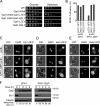
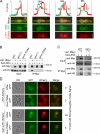

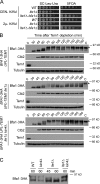
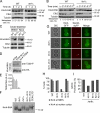

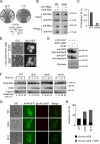

Similar articles
-
Lte1 promotes mitotic exit by controlling the localization of the spindle position checkpoint kinase Kin4.Proc Natl Acad Sci U S A. 2011 Aug 2;108(31):12584-90. doi: 10.1073/pnas.1107784108. Epub 2011 Jun 27. Proc Natl Acad Sci U S A. 2011. PMID: 21709215 Free PMC article.
-
Kin4 kinase delays mitotic exit in response to spindle alignment defects.Mol Cell. 2005 Jul 22;19(2):209-21. doi: 10.1016/j.molcel.2005.05.030. Mol Cell. 2005. PMID: 16039590
-
The N-Terminal Domain of Bfa1 Coordinates Mitotic Exit Independent of GAP Activity in Saccharomyces cerevisiae.Cells. 2022 Jul 12;11(14):2179. doi: 10.3390/cells11142179. Cells. 2022. PMID: 35883622 Free PMC article.
-
Coupling spindle position with mitotic exit in budding yeast: The multifaceted role of the small GTPase Tem1.Small GTPases. 2015 Oct 2;6(4):196-201. doi: 10.1080/21541248.2015.1109023. Small GTPases. 2015. PMID: 26507466 Free PMC article. Review.
-
SPOC alert--when chromosomes get the wrong direction.Exp Cell Res. 2012 Jul 15;318(12):1421-7. doi: 10.1016/j.yexcr.2012.03.031. Epub 2012 Apr 6. Exp Cell Res. 2012. PMID: 22510435 Review.
Cited by
-
Spindle Position Checkpoint Kinase Kin4 Regulates Organelle Transport in Saccharomyces cerevisiae.Biomolecules. 2023 Jul 10;13(7):1098. doi: 10.3390/biom13071098. Biomolecules. 2023. PMID: 37509134 Free PMC article.
-
The Mitotic Exit Network Regulates Spindle Pole Body Selection During Sporulation of Saccharomyces cerevisiae.Genetics. 2017 Jun;206(2):919-937. doi: 10.1534/genetics.116.194522. Epub 2017 Apr 26. Genetics. 2017. PMID: 28450458 Free PMC article.
-
Cdc5-dependent asymmetric localization of bfa1 fine-tunes timely mitotic exit.PLoS Genet. 2012 Jan;8(1):e1002450. doi: 10.1371/journal.pgen.1002450. Epub 2012 Jan 12. PLoS Genet. 2012. PMID: 22253605 Free PMC article.
-
Fly meets yeast: checking the correct orientation of cell division.Trends Cell Biol. 2011 Sep;21(9):526-33. doi: 10.1016/j.tcb.2011.05.004. Epub 2011 Jun 24. Trends Cell Biol. 2011. PMID: 21705221 Free PMC article. Review.
-
A safeguard mechanism regulates Rho GTPases to coordinate cytokinesis with the establishment of cell polarity.PLoS Biol. 2013;11(2):e1001495. doi: 10.1371/journal.pbio.1001495. Epub 2013 Feb 26. PLoS Biol. 2013. PMID: 23468594 Free PMC article.
References
Publication types
MeSH terms
Substances
LinkOut - more resources
Full Text Sources
Molecular Biology Databases
Miscellaneous

